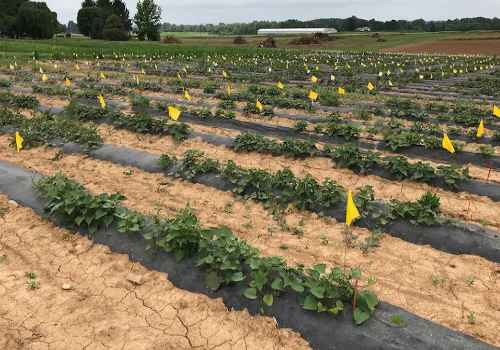By Tom Butzler
Sweet potatoes are working their way into our meals more and more. Is it because Americans are becoming adventurous with their taste buds? Or are we becoming more aware of the health benefits of a diet heavy in vegetables?
Whatever the case, sweet potato consumption is on the rise. According to the latest United States Department of Agriculture statistics, yearly consumption was around 4.2 pounds in 2000. In 2016 (last year data was collected), Americans upped that average to 7.5 pounds.
To address that need, American farmers have been busy planting, with last year’s total reaching 147,000 acres. Leading the way is North Carolina, followed by California, Mississippi, and Louisiana. Knowing the placement of states within the US, you can correctly assume that this is a heat-loving crop (source of origin is tropical America). But the crop is making inroads into our growing region. The Northeast accounts for about 1600 acres on 818 farms with Pennsylvania at 144 acres.
Dr. Luis Duque, Research Professor from Penn State’s Plant Science Department, has been conducting research to determine what varieties might perform best in Pennsylvania’s soils and climate. Many of the entries, representing a wide diversity of skin and flesh colors, were from North Carolina State University (NCSU) and Louisiana State University (LSU).
Several varieties rose to the top, all of which were orange-fleshed. One of those was Beauregard, a 1987 release from LSU. It is noted to store well but can be misshaped under flood conditions. The other top performing LSU entry, Orleans, is very similar to Beauregard but without as many misshapen roots. The top NCSU performer was Covington. In the Tar Heel State, it comprises 90 percent of the acreage planted.

Sweet potato research trial at Penn State’s Horticulture Research Farm. Each yellow flag represents a different variety.
The tender annual needs 100–120 days to reach maturity. Contrast that to some of our garden standards such as lettuce (45-60), cucumbers (55-65), and sweet corn (70-105). The crop is started as rooted pieces of a sweet potato vine, called slips. The slips should only be planted until soil temperatures have reached 65 degrees F, no different than the seeding requirements of our other warm-season crops. Planting could be speeded up several days by using raised beds and black plastic mulch.
Dr. Luis Duque harvesting sweet potato varieties from his research plot at Penn State’s Horticulture Research Farm.
Nitrogen requirements are around 50 pounds per acre and a soil test will assist with the phosphorus and potassium recommendations. For home gardens, a general rule of thumb would be 3 tablespoons of 10-10-10 equivalent per 10 feet or row. Irrigation is very critical the first two months after planting. By that time, roots can reach depths of 2.5 feet and withstand drought-like conditions. Like watering, weed control is initially important but as the vines spread out, they easily out-compete and shade out weeds. Unlike potatoes, which are tubers (enlarged underground stem), sweet potatoes are enlarged roots. These need to be dug before a frost as decay in the vines quickly advances to the underground structures.
While Pennsylvania growers will have a tough time competing with the sweet potato growing centers in the southern US, it can be an option for direct market operations (farmers’ markets, roadside stands, etc.). It can also provide offerings into the fall and winter months. For the home gardener, it’s a chance to widen the variety of products coming out of the vegetable patch.